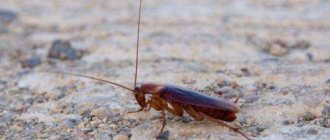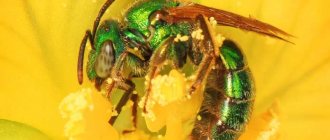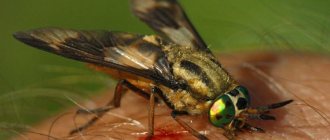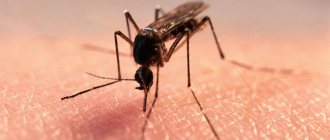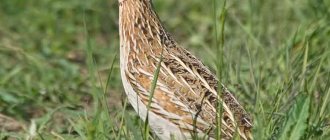The earth is inhabited by huge hordes of insects. Their exact number is still unknown. Currently, it is estimated that there are between 2 and 8 million species. Only one million insects have been described, while several thousand more new species are discovered every year. Some species are so unique that they have only one or a few representatives. If we take insect pests, there are more than 700 thousand species. The number of parasites for both humans and agriculture is quite large, but you can learn to fight them if you know their description and characteristics.
Insect pests of roots
The most important pest of roots is the click beetle. It looks very unsightly, but causes enormous damage to agricultural land. In particular, not the beetle itself, but its offspring larvae, which are called “wireworms”. Wireworms are found in the top layer of soil, where they first eat plant seeds and then make their way inside the root system itself. Damaged plants become victims of saprotrophs, as a result of which they quickly rot. To protect against these pests, preventive measures should be taken, because if it has already started, it will be extremely problematic to get rid of it.
Click beetle
Army ants
There are a huge number of ant species in the world, and many of them are very dangerous. These include army soldier ants, which are a specialized caste of worker ants and termites. The lack of vision only makes them more dangerous, because they attack anything that has flesh and blood - a fly, an elephant or a person. These fighters move in colonies and do not build anthills, so getting in their way will be a big deal. This type of ant has a large body, reaching 3 centimeters. They are armed with powerful, long mandibles that easily rip open flesh. Having made a hole, the ants climb into the wound and continue to destroy tissue, which causes incredible pain to the victim. They were even figuratively called “living death.” A colony of such ants could chew up an elephant in a week, and that would be a lot for a person to eat in a day.
Insect pests of fruits
As a rule, the main pests of fruits are the larvae of a certain group of insects. This group includes such orders as butterflies, Hymenoptera, Coleoptera and Diptera. These pests are endowed with a number of features, which include a hidden lifestyle and dependence on the fruiting phase of the plants. The activity of damage to seeds and fruits depends on the regularity of fruiting.
Many insects have evolutionarily adapted to live inside cones and fruits for a long time due to facultative diapause. These pests are not characterized by outbreaks of reproduction, and the growth of their numbers is determined by the characteristics of the fruiting of forage species. Damaged fruits and seeds negatively affect forest regeneration. It is extremely important to protect plantings from these parasitic insects.
leaf roller
Ognevka
Lonomia
Quite an attractive butterfly. Distributed in the jungles of South America. And completely not dangerous to humans. But its caterpillar is a completely different matter. Lonomy caterpillars hatch in a group, and sit on tree trunks in the same way, perfectly camouflaging themselves as moss. Moreover, they can change their color depending on the environment - on gray moss they will be gray-brown, on green moss they will be brown with green branched shoots. Caterpillars are extremely difficult to spot.
The venom of lonomia is considered one of the strongest; it has a destructive effect on the blood, practically paralyzing the ability to clot. When contacting an animal, a person suffers liver hemorrhages and stroke. It is especially dangerous if contact occurs with several caterpillars. The toxin has an antidote, but it can only help if introduced into the body no later than 15-18 hours after infection. In the future, death may occur.
Rare cases of infection are due to the short period of existence - from hatching to pupation, Lonomia lives for about three spring months. The caterpillar never attacks humans - the poisonous shoots are needed only for protection.
Methods for controlling insect pests
In order to protect vegetation from the negative influence of insect pests, a number of different methods are used to exterminate them. The main methods include:
- Mechanical method. This method involves a wide variety of pest control measures. To do this, various barriers are created for their reproduction and movement through plantings and crops, and special equipment is also used to catch them. Household tools include adhesive rings that are applied to trees and plantations;
- Agrotechnical method. Here, pest control consists of improving the growth conditions of cultivated plants. For example, deep plowing can combat the larvae of beetles, darkling beetles, cutworms and click beetles. Mass clearing of fields and gardens from weeds leads to a reduction in the number of insect pests, since many of them develop on weeds. Also, the number of pests may depend on the crop rotation method. Rotation of crops and changes in sowing dates can help reduce the number of harmful insects;
- Physical method. The use of this method of control is characterized by temperature fluctuations, which can have a detrimental effect on pests. Electrical shocks can be used to kill the insects.
- Chemical method. The most common type of pest control. Its action is to spray chemicals that poison insects and cause them to die en masse. Poisons can be either liquid or vapor. The use of insecticides and pesticides is the most popular chemical method of pest control.
The use of all insect control measures will avoid negative impacts on vegetation. However, all of the above measures in one way or another affect the ecology of the planet. In particular, the use of insecticides and pesticides leads to serious negative consequences, namely a decrease in the biological productivity of the soil, disruption of the microbiocenosis of groundwater, and the accumulated residues of poisons prevent the restoration of fertility and reduce the value of agricultural products.
Lacewing
This is a small, very beautiful, elongated green insect with transparent mesh wings and bulging eyes. The lacewing is usually nocturnal, so it often flies into the room into the light of lamps, and you can see it. This predatory insect destroys aphids in huge quantities
A female lacewing can lay up to 400 eggs, but she does this in an unusual way: she releases a sticky liquid from her abdomen, then, slowly raising her abdomen, forms a high column of this substance, which instantly hardens, and lays one egg on it.
The fact is that lacewing larvae are xylophagous, and the first hatched individual, if it were a mass clutch, would have eaten the rest of the eggs. By laying eggs one at a time, lacewings deprive their firstborn of the opportunity to reduce the number of the species.
Since lacewings lay eggs only on plants occupied by aphids, the larvae have something to eat after birth. One larva eats about 600 aphids per season, but can also feed on other small insects. She injects gastric juice into the victim, which dissolves all the internal organs of the insect, and then sucks out these liquefied insides. Through their feeding habits, lacewings bring many benefits to our gardens.
Ladybug: Aphid Killer
Ladybugs are the most beneficial insects. They are valued not only in Moscow, but throughout the world. These seemingly harmless bugs are considered the main destroyers of harmful aphids.
“The ladybug cannot be confused with any other insect: the black dots on the red back immediately catch the eye. At the same time, few people know that there are quite a lot of their varieties. They come in white, black, yellow, and also with a different number of points: from two to 14. In total, there are about eight thousand species of ladybugs. In Moscow, the most common bugs are those with seven dots on a bright red shell,” says Elena Semenova.
Almost all representatives of this group of insects are predators. They eat not only aphids, but also scale insects, sawflies, psyllids and mites.
“There are different pests: leaf-biting, sucking, stem-boring. They are carriers of diseases that cause tree death. The main task of entomologists is to prevent this. Ladybugs and other predators help us with this, naturally reducing the number of harmful insects,” says Elena.
The larvae of ladybirds are particularly voracious. One individual eats from 70 to 300 aphids per day, helping to rid all types of urban plantings from them: from shrubs in courtyards to forested areas.
Adult beetles have quite powerful jaws. They can even bite a person, but this is not at all dangerous. There will be no damage to the skin, only a slight tingling sensation will be felt.
How many are there?
“There are so many of them!”
It is clear that when the enemies are so numerous and diverse, it is very difficult to fight them. To develop a strategy for protecting against pests, we need to understand the ways in which they exist and find their “weak spots.”
Hipster bug larvae at an early stage of development. Photo: AiF / Nina Belyavskaya
Article on the topic
Recognize and neutralize. How to deal with plant bacterioses No one knows exactly how many species of insects live on Earth. Speculation usually points to untold hordes (2 to 8 million) of species. About one million have been described reliably to date. At least 7,000–7,500 new species of insects are discovered every year. By the way, not all of them are numerous - some are known from finds from only one area or even from a single copy.
If we proceed from the modern classification and the criterion of “harmfulness,” we will count more than 700 thousand species of insects. Let's not take into account pests of food supplies or equipment, human parasites and warm-blooded animals, but leave only those who, by feeding on various parts of plants, reduce the yield or worsen their appearance. There still remains a significant number - about 250 thousand species. This is really a lot!
Despite the size and diversity of the “enemy army” of insects, it is possible and necessary to contain its onslaught. To do this, it is necessary to understand how our “opponents” live, at what time they are invulnerable, and when they can be taken by surprise.
Hawthorn flies in flocks. Photo: AiF / Nina Belyavskaya
Diversity
In the photo: Mosquito.
Among the most important orders of insects, two large groups are distinguished. These are species with complete transformation, and the second group includes insects with incomplete transformation.
The division of the body into three parts, as well as antennae and compound eyes are the most important characteristics of insects. In addition, vision plays the most important role in nocturnal insects, but daytime insects navigate in space with the help of other organs.
A striking feature of insects is their extraordinary diversity. Flying, crawling, running, swimming, they all play their role in living nature.
